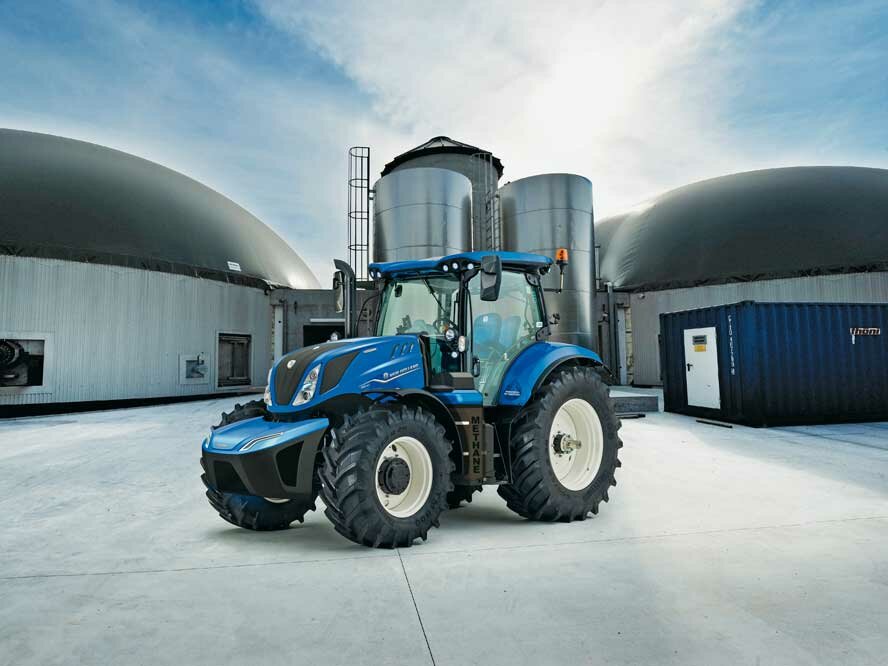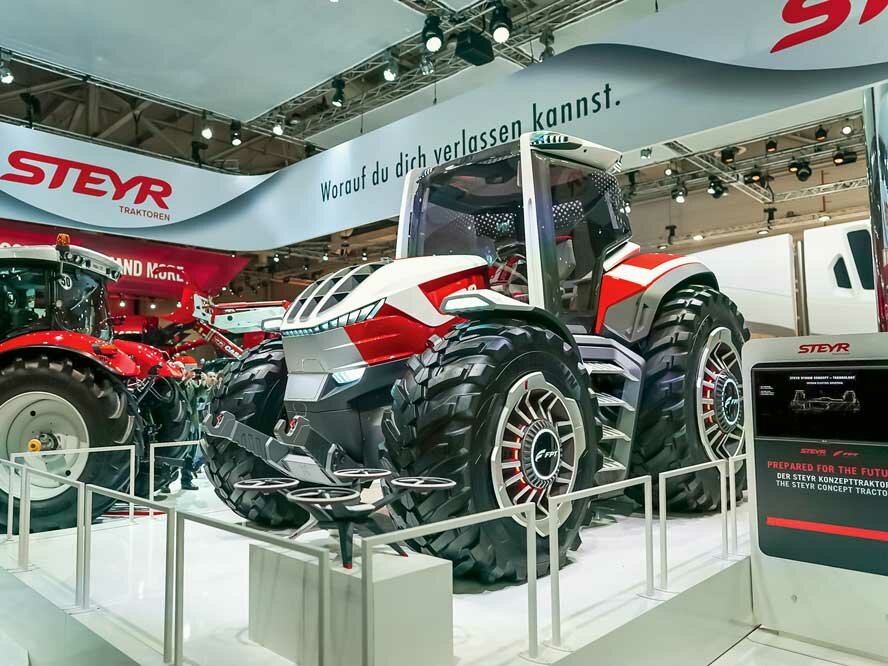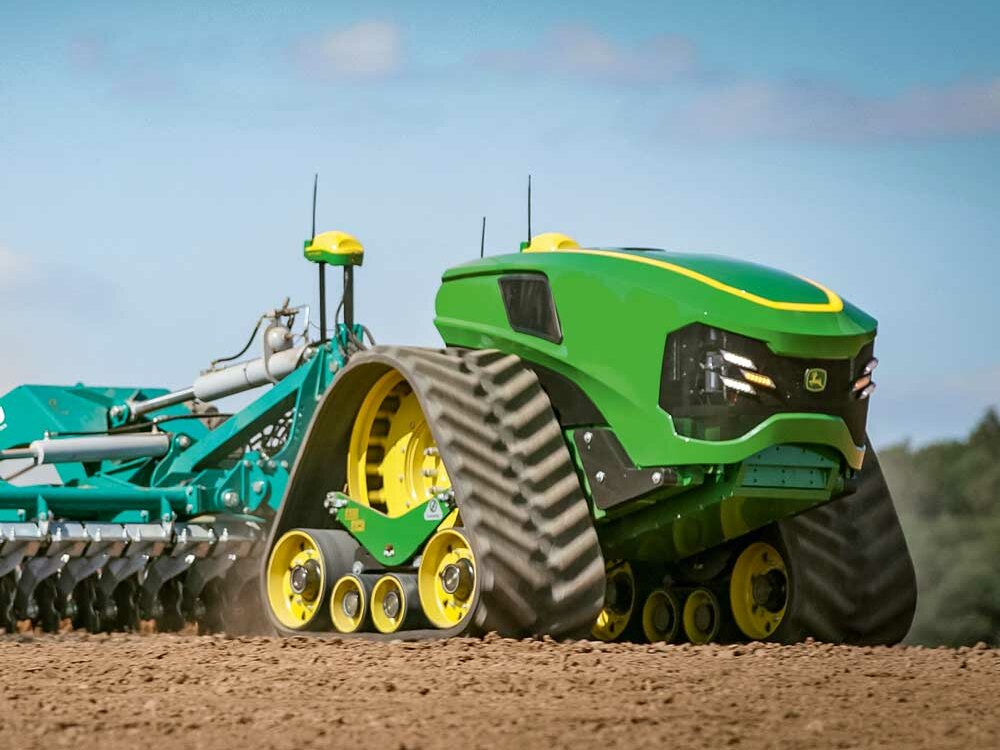Diesel: What comes next?
By Thomas Preusse, DLG Mitteilungen
Alternative power concepts are as old as tractors themselves. Admittedly, some developments have completely sunk out of sight, such as the Elsbett engine fuelled with pure vegetable oil. But »studies« or »experimental tractors« following the theme continue to haunt Agritechnica, and even more so the rows of participants at agricultural engineering meetings. As energy reservoir, batteries or hydrogen can replace diesel fuel. Being considered alongside the internal combustion engine as »energy convertor« is the fuel cell.
But out on the farm the number of practical solutions is exceptionally limited. This is understandable. After all, attempting to alter the full breadth of standards based on fossil energy is no child’s play. But in current times of climate change how long can we afford to stay with fossil energy?
Manufacturers of agricultural machinery seek alternatives to diesel and not only for attached implements but for the principal drive too. Current developments concentrate on two areas: electric drive (via batteries, hydrogen/fuel cells or direct), and internal combustion engines »fed« with methane or sustainably sourced synthetic fuel. Without doubt, all manufacturers are looking at all options, although not all are active to the same extent everywhere. For instance, the CNH concern (i.e. its engine manufacturer FPT and the tractor maker New Holland) currently concentrates on fuel cells and gas engines. Focussing more on electrification at the moment is especially John Deere, but also Fendt.
Electricity from hydrogen
As early as 2009 New Holland was standing by with a concept tractor derived from the T6.140 and powered by pure hydrogen whereby actual drive was from an electromotor supplying a good 120 HP draught power. This was supplemented by a second e-motor for pto and auxiliary implements. So here, electric current was produced from hydrogen via fuel cells. Admittedly, fuel cells have a few advantages over batteries. And compressed hydrogen is suitable for tank storage. However, working with it is not to be taken lightly, as demonstrated all too well in the past by Zeppelins. In this respect, not much thought has been given to automobiles. But for trucks, major manufacturers (Daimler, Iveco, Volvo) are hard at work on the concept and want the technology ready for the market in ten years. For (urban) buses, development could be even faster. As with electromobility, the supporting infrastructure for longer distances could well turn out a chicken and egg problem.
For farming, a widespread fuel station network isn’t a problem. Hydrogen could be produced on the spot either through electrolytic splitting of water with photovoltaic input or using methane from biomass fermentation. Here we have a way that wins points not only through local zero emissions, but also as »energy independent farm«. Electromobility through the detour of using hydrogen is relatively expensive. But where high performance is required could still represent an alternative to batteries, especially where there’s no way of attaching electricity cables to electric machinery. However, there are no new developments currently with tractors.
Methane
But why produce the difficult-to-handle hydrogen from methane if it’s possible to power the tractor directly with methane gas? A catch here is that using methane in the form of natural gas, as with private cars, would simply be replacing one fossil fuel with another. In principle, methane can be produced from hydrogen using electrolysis and finally reaction with CO2 (»power to gas«) or from biogas with its 25 % proportion of CO2 separated out. The methane can be liquified at – 162°C (»liquid natural gas«, LNG) and thus with considerable energy input, or compressed (»compressed natural gas«, CNG).
Liquid or gaseous? The domains for LNG so far are long distance truck freight and shipping. This correlates with LNG’s relatively high energy density that enables long journeys per tank filling. However, this application requires a special supply infrastructure, obviously not without its complications. Technically seen, potential for LNG is high. In rural areas and especially on individual farms it would be hard to realise, however. Methane, once filled into the tractor tank, has to be used within a week at the most or will simply evaporate and, as we know from ruminants, methane in the atmosphere is one of the most climate-damaging gases. For a tractor, this problem could be overcome. But there would certainly be difficulties with a combine harvester if the remaining methane in the tank couldn’t be used in some other way.
What about CNG then? Admittedly, this has the disadvantage of lower volume-based energy density compared with diesel. The normal tractor fuel tank sizes are not sufficient. This is why we first of all recognise a gas engine tractor through its supplementary tanks.
Series production with compressed gas in 2021?
As with hydrogen, New Holland is forerunner here. In 2013 the company presented the first prototypes, still with nine gas containers attached around the tractor. A new model in 2019 looked much more streamlined, and a series is announced for 2021. The machine pulls its 180 HP out of a 6-cylinder Otto engine with four valves per cylinder. Pure methane is injected into the combustion chambers at 24 bar. Exhaust gas treatment is through a three-way catalysator. And nothing else is required - no particle filter, no AdBlue. The manufacturer says this means 10 % less CO2 emissions compared with a diesel-fuelled engine. If the tractor is fuelled with biomethane, the energy balance is almost equalised, so long as one ignores the fact that the area used for the biogas raw material could have produced another crop (»opportunity costing«).
In 2015 Deutz-Fahr also presented a tractor powered by (as with New Holland) a diesel engine converted to run with spark ignition. Power output: 115 HP. It therefore also managed without intricate exhaust gas cleaning and claimed 10 to 15 % less CO2 emissions. Even with seven compressed gas tanks this experimental model offered only half the travel range of a diesel tractor.
Valtra followed another concept from 2010 with a »dual-fuel« tractor. Its four-cylinder diesel was fuelled with a methane-diesel mix, the ratio of which varied according to the operational conditions. A small series production run was actually started but the big problem with this concept was the technology was not granted a universally valid vehicle registration certificate, meaning that every tractor had to be individually registered.
Thus, from concept through to practical application, gas engines appear to still have a way to go. Admittedly, such tractors have been working for years now on company experimental farms and within research institutes. And theoretically, the cyclical concept of field - biogas plant - tractor and back to the field is practicable. It would be even more interesting if, in the interests of climate protection, biogas fermentation residues were used for gas production, or so-called »paludiculture« with rewetted peatlands.
But the biggest practical problem hereby is that there are very few countries where biogas, not to mention further-reaching concepts, is so strongly supported as in Germany. A biogas plant only for the tractor appears illusory. As with electromobility, instruments to encourage interest and application appear to be necessary to overcome the problems from lack of infrastructure, because a cyclical economy based on the individual farm is maybe a bit too romantic.
Is electricity the best solution?
If the gas engine discussion sounds too much like a niche subject, then the opposite must be the case for electric drive. Sometimes one has the impression that there’ll be nothing but e-drive in 20 years’ time. There’s a reason for this: The efficiency degree of the combination of battery and electric motor lies by 80 % whereas an internal combustion engine manages just 34 %.
As everyone knows, though, the greatest problem with electromobility is the currently available lithium-ion batteries. For producing higher levels of power these batteries have to be so disproportionately large that their dimensions substantially overtake those of the tractor. For instance, the battery for a 400 HP tractor with capacity for twelve hours work would have to be 3,800 l, weighing-in at 12 t, calculates Dr Heribert Reiter, development manager of Fendt. But for 70 HP output and four hours of work the respective specifications would be 300 l and 600 kg. This makes tractors such as Fendt’s e100 interesting, especially for municipal work or enterprises such as viticulture where electricity is home-produced via biogas or photovoltaic. On top of this, the current could also be the basis for supplying all »robotics« on the farm.
Electricity powered implements
A completely different option is offered by electric drive for tractor-attached implements on the basis of 48 volt on-board current, »assistant power« in heavy trailers or replacing hydraulics by electricity in transmissions. In particular, John Deere has been very creative in this area over the last years, as confirmed by the gold and silver medals won in recent Agritechnica shows. But here we talk less about efficiency in the sense of avoiding CO2 emissions, and more about its role in precision.
A combination of diesel and electromotors focussing on providing driving power was presented as early as 2011 by Rigitrac and the Technical University of Dresden. At that time, this was seen as an expensive speciality. In 2019 Steyr in association with concern sister Fiat Powertrain (FPT) – also very active with gas engines - came up with a similar concept study. The principle of diesel-electric drive was up until then mainly used by railway locomotives although also favoured by ships (after starting-off in submarines). The heart of this concept is an always optimally running combustion engine suppling current via generators and accumulators to e-motors with all their performance advantages. Information from Steyr/FPT on possible fuel and, with that, CO2 savings, tends towards the defensive: »During certain tractor operations, 10 % compared with pure diesel engines«.
Hope for new battery concepts
Research into lithium air batteries which fundamentally promise a 10 to 20 times higher energy density has, contrary to earlier expectations, not yet reached a stage where absolutely dependable results can be calculated. With all thoughts on batteries, there still remains the Damocles sword of the »required raw materials« (copper, cobalt, lithium, rare earths).
Thus, everyone ends in a trap situation whereby the fossil fuel fed diesel engine is realistically seen as a dead end and the electromotor as »the« solution. This is a trap because the electromotor cannot really deliver the goods because of the battery dilemma, at least in the middle and higher power ranges. But maybe the prophet doesn’t have to go to the mountain, but the mountain to the prophet this time! Translated, this means we need completely new ideas instead of simply adjusting the »old« central machine, the tractor, to fit changing conditions. Here, we’re talking about automated large-scale machinery with a central electrical current supply, but also about battery powered robot swarms for the lighter, more precise jobs. Ultimately, the real hit would be a coordinated design to meet such requirements. There exist apparently »crazy« designs from the Braunschweig Agricultural Engineering Institute showing machinery suspended from overhead cables. Bound with the concept of controlled field traffic, this might not, after all, be a Utopian vision. However, the »frequency« on the field surface would be low. Another idea is installation on headlands of central electricity supply points whereby machinery could pull the necessary cable behind as in currently used irrigation systems. However, all these concepts take for granted that the supplied electricity would be generated in a »green« way, otherwise emissions would only be transferred from one location to another.
Journey into the unknown
Were it not for the emission dilemma, there would be no need for an alternative to the diesel engine. Were it not for the battery dilemma, absolutely no alternative would be in sight for electrification of all fieldwork. Alone in this double »were« we can see why the concepts of the developers have not found faster acceptance in practice. Fossil raw materials are to date still far too cheap. And the advantages of electromotors with their power characteristics, precise management and integration in digital concepts, but also regarding reductions in emissions, noise or oil losses, are probably only realisable over the longer term with smaller machines, or robot swarms. Development time could be reduced if a central electricity supply could be installed in fields. An option for larger machinery remains the e-drive via fuel cells. Here, developments in the truck segment (Iveco, Daimler/Volvo) are just picking-up speed. Agricultural engineering could link-up. Technically seen though, the simplest way ahead is still the modified diesel engine powered by methane or synthetic fuels.






